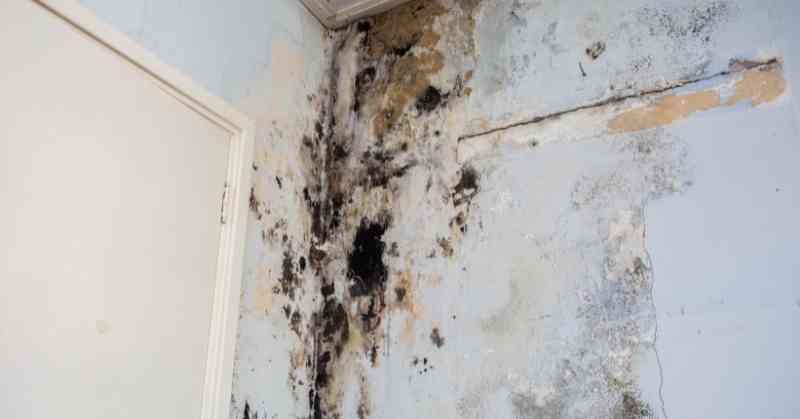Struggling with water damage? Follow our six-step guide to handle insurance claims efficiently. Ensure a swift recovery and protect your home. Act now!
Water damage can be a nightmare for homeowners. The immediate response is panic, but it is crucial to stay calm and organized. Properly handling your water damage insurance claim will not only help you recover financially but also ensure your home gets back to its original state, if not better. This guide covers six steps to effectively manage water damage insurance claims.
1. Assessing the Damage
The first step in managing a water damage insurance claim is to assess the extent of the damage. Here’s how to go about it:
Safety First
Before you start, make sure the area is safe. Water can cause electrical hazards, so be sure to turn off the power supply to affected areas. If the water damage is severe, it might be best to evacuate until it’s safe to return.
Initial Inspection
Once it’s safe, conduct an initial inspection. Look for visible signs of water damage, such as stains on walls and ceilings, warped floors, or standing water. Don’t forget to check less obvious areas like basements, attics, and crawl spaces.
Take Notes
Write down your observations. Describe the extent of the damage, the rooms affected, and any items that were compromised. This information will be vital when communicating with your insurance company.
2. Contacting Your Insurance Company
After assessing the damage, the next step is to contact your insurance company. Doing this promptly can help expedite your claim.
Call your insurance provider as soon as possible to report the incident. Provide them with a brief overview of the damage and ask for guidance on the next steps. Some policies have time limits on filing claims, so don’t delay.
Ask your insurer to explain what your policy covers. Water damage coverage can vary significantly between policies. Knowing what is covered will help you understand what costs you may need to handle out-of-pocket.
Request information on the claims process. Understanding the timeline and required documentation will help you stay organized and ensure your claim progresses smoothly.
3. Documenting the Damage
Proper documentation is critical when filing a water damage insurance claim. Accurate records will support your claim and speed up the approval process.
Photographs and Videos
Take multiple photos and videos of the damage from different angles. Include wide shots of entire rooms and close-ups of specific damage. Capture the condition of personal belongings, structural damage, and any standing water.
Inventory of Damaged Items
Create an inventory of damaged items. Include descriptions, purchase dates, and approximate values. If possible, gather receipts or bank statements as proof of purchase. This inventory will assist in determining the value of your claim.
Keep a Log
Maintain a log of all communications with your insurance company. Record dates, times, and details of phone calls, emails, and letters. This will help you keep track of your claim’s progress and provide a reference if disputes arise.
4. Mitigating Further Damage
While waiting for your claim to be processed, it’s important to take steps to mitigate further damage. Insurance companies expect homeowners to prevent additional harm where possible.
Make temporary repairs to prevent further damage. For example, use tarps to cover broken windows or roofs, and place buckets to catch leaking water. Keep receipts for any materials purchased, as these expenses may be reimbursed.
If safe, remove standing water using pumps or wet vacuums. Dry out the affected area with fans and dehumidifiers to prevent mold growth. Document the steps you take as proof that you are mitigating further damage.
Move undamaged items to a safe location. Elevate furniture and appliances off the floor to prevent future water damage. Taking these steps demonstrates to your insurer that you are proactive in safeguarding your property.
5. Filing the Claim
With the initial steps completed, it’s time to file your water damage insurance claim. Being thorough during this stage can significantly impact the outcome.
Here’s a quick guide to filing an insurance claim:
- Complete Claim Forms: To begin, fill out the forms from your insurer. Provide detailed information and attach the required documents such as photos, videos, inventories, and receipts. Make sure to double-check for accuracy to avoid any delays.
- Submit Supporting Documents: Include an inventory of damaged items, receipts for temporary repairs, and a communication log. Organize everything neatly for the adjuster’s review.
- Follow-Up: Regularly follow up with your insurance company, respond promptly to requests for additional information, and stay proactive to expedite the claims process.
6. Working with Adjusters and Contractors
The final step involves working with insurance adjusters and contractors to repair your home and finalize your claim. Your insurance company will assign an adjuster to assess the damage, so be present during the inspection to provide documentation and address concerns. Obtain multiple repair estimates from licensed contractors specializing in water damage repairs and give these to your adjuster to help determine the settlement amount.
Once you receive a settlement offer, review it to ensure it covers all repairs and losses, and negotiate if necessary. After accepting the settlement, coordinate and monitor repairs with your contractor, keeping all receipts and invoices for your claim. For comprehensive restoration services, visit https://fine-restoration.com/ >>>
In Conclusion
Handling water damage insurance claims requires a methodical approach for a smooth recovery. Assess the damage, contact your insurance provider promptly, and document everything meticulously to set a solid foundation for your claim.
Mitigate further damage while waiting, and file your claim efficiently with complete documentation. Collaborate with adjusters and contractors to restore your home to its original condition.






